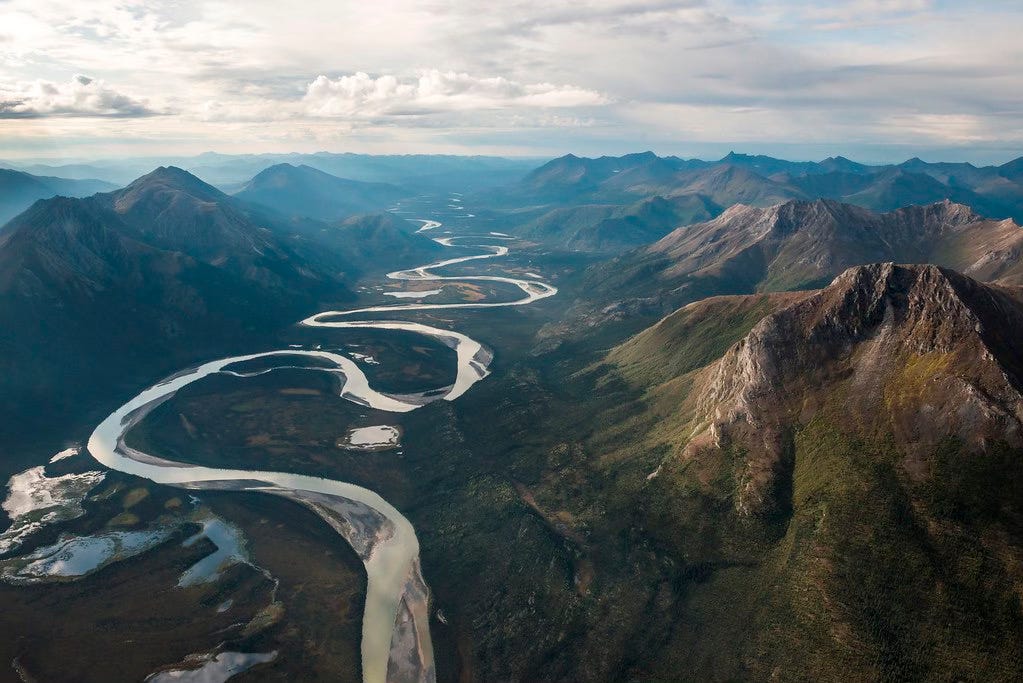our public lands are under attack
In November I wrote this piece expressing my concern for the environment in the wake of Donald Trump’s re-election.
Allowing someone who has publicly dismissed climate change as a “scam” to govern one of the globe’s biggest greenhouse gas emitters seemed like a pretty terrible idea to me. I was truly frightened for the state of the planet, and for all of its inhabitants who would bear the brunt of the Trump administration’s decisions.
But I was still unprepared for the series of destructive and chaotic decisions made by Trump and (the unelected) Elon Musk over the past two months.
In just a few short weeks after Trump’s inauguration and his instatement of Elon Musk as the head of the “Department of Government Efficiency” (DOGE), hundreds of thousands of federal workers were fired, habitat and wildlife protections were rolled back, and national monuments and wildlife preserves were offered up for drilling, mining, and timber production.
On February 14th, at least 1,000 National Park Service employees and 3,400 Forest Service employees were let go with no warning and no concrete explanation.
For parks and lands that are already operating with 20% less staff than they were fifteen years ago, these mass firings were an unexpected and devastating blow. More than 4,400 individuals lost their dream jobs and financial security, and our public lands lost stewards, educators, and scientists in just one day.

This decision radiated beyond federal land management agencies. I currently work for a conservation corps and it felt like our job security was ripped right out from under us.
For two weeks, the Forest Service was frozen from their invoices, unable to pay outstanding bills for work we’d done with them. We had to drop all of our projects with federal partners (NPS, USFS, U.S. Fish & Wildlife, etc.), and almost a dozen of my coworkers were furloughed without pay as we scrambled to figure out the future of our corps.
I was on a project in Saguaro National Park during this time and the rangers we worked with were stressed and demoralized, having just witnessed their friends and colleagues get fired without cause. Everyone was worried, frustrated, tense.
Thankfully, multiple federal judges have ruled these terminations unlawful, calling for the reinstatement of thousands of federal employees. Our corps got our federal projects back and we all breathed a sigh of relief.
But this past month of chaos is just an indication of the danger and uncertainty our public lands now face.
Even if federal workers are recovering their jobs, there’s no reason to believe there won’t be more unlawful terminations in the future. There are also fewer positions available as federal land management agencies issue hiring freezes at least through 2025.
And as mentioned earlier, our public lands are being opened up to unprecedented mining, drilling, and timber operations.
Trump has recently signed several executive orders rolling back protections for fragile and important ecosystems, and turning over land to private extraction operations.
At stake: millions of acres of wildlife habitat for threatened and endangered species, wildlife migration corridors, the most intact, “wild” land in the contiguous U.S., and thousands of miles of rivers and streams that provide drinking water for millions of people.
National parks like Gates of the Arctic and monuments like Bears Ears in Utah are now open for fossil fuel operations, putting the land and its inhabitants at risk.

Trump has also claimed that the solution to wildfires is increased timber production on federal land, a notion that is completely untrue – increased logging actually causes more vulnerability to wildfires. But he has issued executive orders to boost timber production nevertheless.
All of these decisions have been made without proper input from scientists, the public, and most importantly, the Indigenous people who are the original stewards of this land.
The U.S. already has a complicated history with its public lands – most of which were illegally seized from Indigenous tribes – and turning them over to private corporations for increased extraction only moves us further away from the goal of true stewardship and compassionate land management.
Our public lands have so much potential. They could be powerful tools for carbon sequestration and climate change mitigation, important habitat for threatened and endangered species, and inspiration for people to get invested in conservation efforts.
I love our public lands. I love working on them and for them. I want thriving ecosystems, well-maintained trails, healthy plants and animals. I want our lands to be respected and treasured. I want people with deep knowledge of our lands to manage them with care.
It is profoundly worrying that in just a couple months the Trump administration and DOGE have managed to disrupt the federal land management agencies, remove protections for wilderness areas, and put invaluable, sacred places in the hands of the fossil fuel industry.
I know I’m not the only one who cares for our land and who opposes these measures, but sometimes it’s difficult to know how to help.
One of the simplest and most impactful things we can do right now is reach out to our representatives and senators. The app 5 Calls makes it incredibly easy to call your elected officials and make your voice heard.
If you can, donations of time or money to conservation efforts are always beneficial, especially to Indigenous conservation groups in your area.
And if you visit public lands this year, be a good steward of the environment. Leave no trace, encourage others to do the same, and have conversations about the importance of keeping our lands well-cared for and out of private hands.
The past few months have been difficult and uncertain, but I’ll still be out on the trails, working to maintain our lands as responsibly and lovingly as possible.
We won’t allow our public lands to be taken from us. They’re too important.



